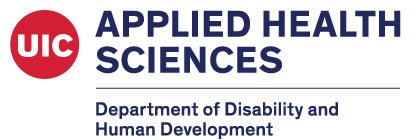As of the year 2022, it’d be hard to believe if you hadn’t heard it, – if you hadn’t read about it in a friend’s post on Facebook, if you hadn’t seen it thrown about in the text of a photo on one’s Instagram story. You, yourself, may have even staked claim to it, – a seemingly innocent explanation for why you insist on color-coding your closet, or refuse to leave the house without hand sanitizer. The it that I’m referencing is OCD, or Obsessive Compulsive Disorder, and no, more likely than not, you do not meet the diagnostic criteria for it.
Obsessive Compulsive Disorder (OCD) is a well-known mental illness, but it is one that is easily misunderstood because of the way that it is often portrayed in the media and talked about in everyday speech. However, OCD is so much more than excessive hand-washing or extreme organization. OCD is characterized by involuntary, recurrent, obsessive thoughts and repetitive, compulsive behaviors, and is usually only diagnosed as such when these behaviors interfere with daily life. Most people with OCD have both obsessive and compulsive behaviors, but as with any mental illness, OCD manifests differently in different people. As you can see, OCD is a complex, multifaceted disorder with a range of symptoms that at times, can be quite severe, and even disabling. In fact, a disproportionately high number of those affected with OCD, about 50% of all cases, fall into the severe category, with less than a quarter being classed as mild cases. According to the World Health Organization (WHO), OCD can be so debilitating and disabling to some that in 2019, OCD ranked in the top ten of the most disabling illnesses of any kind, in terms of lost earnings and diminished quality of life. This same report, also, indicated that OCD, at this time, was the fifth leading cause of disease burden for women aged 15 – 44 in the developed world. 1 So, when people misuse the term “OCD,” and make reference to being “So OCD,” they not only fail to acknowledge the legitimacy of OCD as a disorder, they, too, fail to realize the lasting impact it has on those with it.
Still, you might be wondering… what’s the real harm is using OCD synonymously to other terms, such as being clean and organized, or occasionally, even cracking a joke about OCD. After all, it’s just a joke, right?
Unfortunately, for about 2.2 million adults in the United States, alone, OCD is no laughing matter. 2 When one jokes about OCD, or any mental illness/disability, the unintentional consequence of their actions is that real people’s experiences are diminished to nothing more than an idiosyncrasy or quirk, – habits that warrant laughter, rather than treatment. This is not only harmful to those with the disorder or disability, but it can actually hurt their chances of seeking help, should they so need it.
May it be out of fear of being stigmatized, or a misunderstanding of what OCD actually is, studies have shown that it takes an average of 14 to 17 years from the time symptoms of OCD begin for someone to obtain appropriate treatment. This should not be the case, and it cannot continue to be.
To fight against the aforementioned stigma and the widely prevalent misunderstandings about what OCD actually is, it is imperative that we write OCD out of our descriptive language. So, if you find yourself wanting to post on social media about how you just “organized your spice drawer… again,” because you’re “So OCD,” choose to not. If your friend jokes about how “OCD” she can get about certain things, don’t just laugh it off. Consider gently correcting them, offering a more appropriate word for them to use (of note, I use: particular). Then, go a step further. Educate yourself of OCD and other mental illnesses/disabilities, so you know what to look for, and can best correct any future misperceptions that you encounter.
As a Clinical Psychologist, in training, just know: that if you, or someone you love, struggles with OCD, you are seen, you are heard, and your lived experience is valid. Don’t let jokes that you hear, or stigmas that may exist, get in the way of seeking treatment, or of encouraging your loved one to do so.
For more information about OCD, or for treatment resources, I encourage you to visit: https://www.treatmyocd.com/.
References:
1. https://www.ocduk.org/ocd/world-health-organisation/.
3. https://iocdf.org/wp-content/uploads/2014/10/What-You-Need-To-Know-About-OCD.pdf.
















